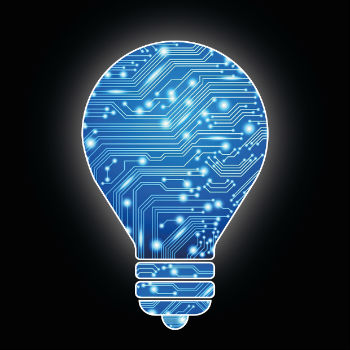 |
|
 |
NOVIDADES
|
Machine learning algorithm finds the best LED phosphor in list of 100,000 compounds.
|
A machine learning algorithm that can swiftly identify the most desirable LED phosphor host compound out of a database of almost 120,000 materials has been developed by researchers in the US. Efficient enough to run on a PC, the program was created by Jakoah Brgoch and colleagues at the University of Houston and has predicted the relevant properties of a highly efficient, thermally stable compound in well under a minute. The team’s algorithm could soon be used to speed up the discovery of new materials for use in commercially competitive LEDs.

Credit: University of Houston
Typically, LEDs are composed of an inorganic, luminescent “phosphor” material, doped with small quantities of rare earth elements. The interactions between phosphor hosts and the rare earth dopants are a strong indication of an LED’s performance. The key properties of a good phosphor are its photoluminescent quantum yield (photon production efficiency) and its thermal stability (resistance to breaking down under high temperatures). Previously, discoveries of new, higher-performance phosphor compounds were made either through trial-and-error, or by the intuition of chemists, meaning many, more optimal materials were likely missed.
Predictive model
Brogch’s team aimed to improve this discovery process by using machine learning to scan a list of 118,287 possible phosphor host compounds in Pearson’s Crystal Structure Database for the most desirable candidate. To create their algorithm, the team merged a model that can predict a compound’s Debye temperature – a strong indicator of its quantum yield – with evaluations of the size of a compound’s band gap – related to its thermal stability.
Machine learning classifies biomolecules
With these measures in place, the algorithm identified the compound NaBaB9O15 as having both one of the highest Debye temperatures and largest bandgaps in the entire database, displaying a quantum yield efficiency of 95% and an excellent thermal stability. Where the calculation would have previously taken weeks, Brogch and colleagues achieved the result in well under a minute, even when using a conventional PC to run their algorithm. The researchers tested the effectiveness of their program by synthesizing NaBaB9O15 in the lab, and substituting some of its composite ions with oxidized europium – which is a rare earth element.
As hoped, this resulted in a highly efficient, thermally stable LED, although the light it produced was too blue to be useful commercially. Brogch doesn’t see this as a significant setback, however. “Now we can to use the machine learning tools to find a luminescent material that emits in a wavelength that would be useful,” he says. “Our goal is to make LED light bulbs not only more efficient but also improve their colour quality, while reducing the cost.”
The algorithm is described in Nature Communications.
Physics World. Posted: Oct 31, 2018.
<< voltar para novidades
|
